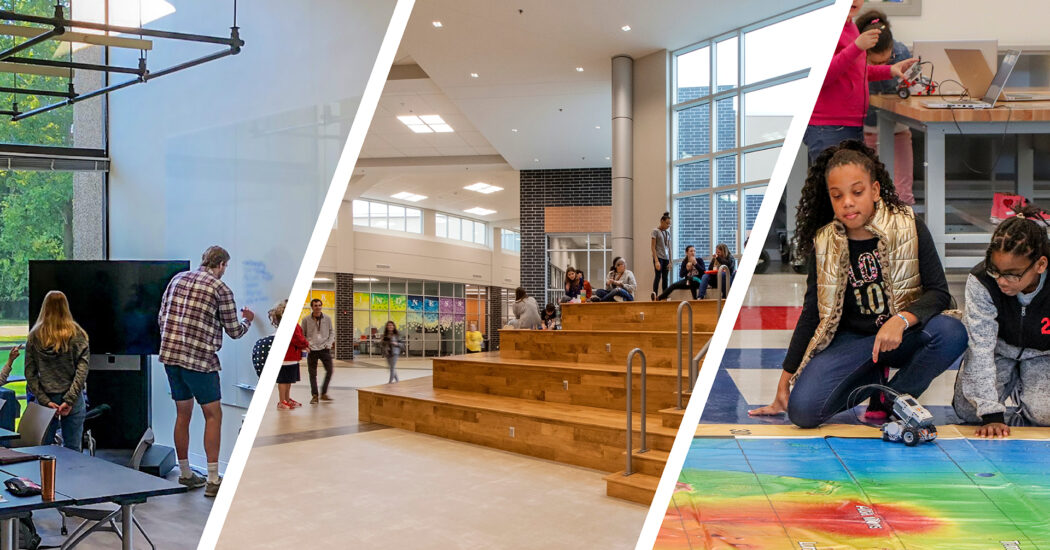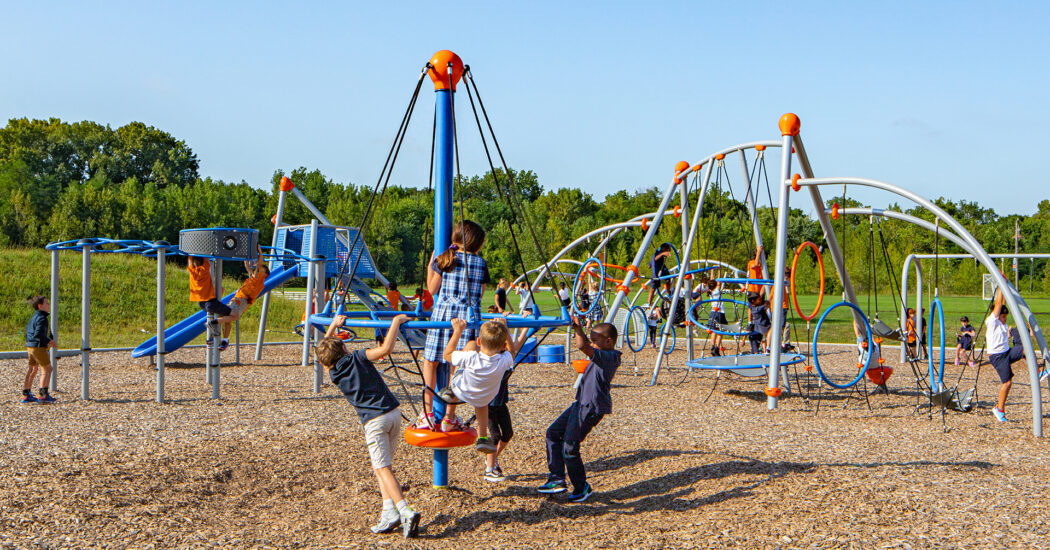How to Pick a Site
-
Category
Studio-K12, Innovation -
Posted By
Anna Marie Burrell -
Posted On
Jan 28, 2015
The design of a school campus is crucial to the safety and efficiency of any program. When given the opportunity to choose between different locations, here are some thoughts on what elements create a successful K-12 exterior environment.
- Space to establish clear visibility and organization –When on a school campus, clear site lines help create a safe environment. Community members, parents, students and visitors need to understand immediately where they are to enter the site, where parking is located and where to enter the school building. When evaluating a potential site, look to see if site frontage will give you enough length to have decel/excel lanes for safe campus entry; that there is space for staff, visitor, student and event parking; and that the site has the room to allow for bus traffic and parent/student traffic separation.

In many urban & rural locations you will be required to extend sidewalks across your site. Consider the presence of or proximity to existing sidewalks, bike routes, and public transportation and how all of these amenities will come together to serve your school community.
- Location of Utilities – Doing your due diligence on location and distance to required site utilities is crucial. A clear understanding of what utilities are available and costs to bring utilities to your site is necessary to understand if a particular location is logistically feasible. If city water is not readily available, it could put a big dent in your budget to run water to your site. You may be forced to look into a well that could then dictate decisions about sprinkling the building and fire protection. Think about utilities such as water, sewer, electrical, data, and gas services.


- Storm Drainage – Selecting a site that drains well, or that can be designed to drain well, is critical. Most new building projects )and some renovation projects) will be required to meet local and/or state requirements for storm water collection, detention, and treatment. Storm sewers, detention ponds or basins, and treatment facilities that remove oils and grit from the storm water, will all likely be required and must meet local design codes. In addition, understanding the closest and most adequate storm water outlet for the site will be necessary in fully understanding the costs associated with the storm water system. Sites without a close drainage outlet can lead to expensive, offsite storm water systems to transport runoff to the appropriate location.
- Zoning/Local Codes and Ordinances – Understand how the site is zoned and what the process might be for changing zoning if necessary. Things to research in the code are requirements such as allowable building height, building material and landscaping requirements. Is the site in a floodplain, wetland, or near a railroad? Make sure you check as certain cities have strict restrictions in regards to each.


- Space for Play and Athletics – Thinking through your future growth at the site is critical if you are envisioning athletic facilities. A high school requires different space than an elementary. Knowing that there is potential land around you to expand or that the space is adequate will keep you from accidentally falling into multi-campus facilities. Elementary schools will need enclosed play areas for the younger students, depending on age. Investigate the size you will need to confirm the site is adequately sized.









